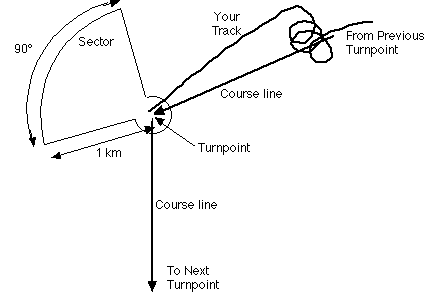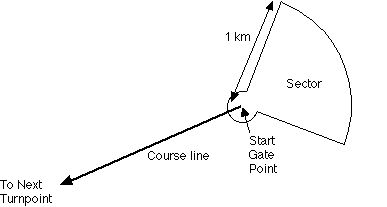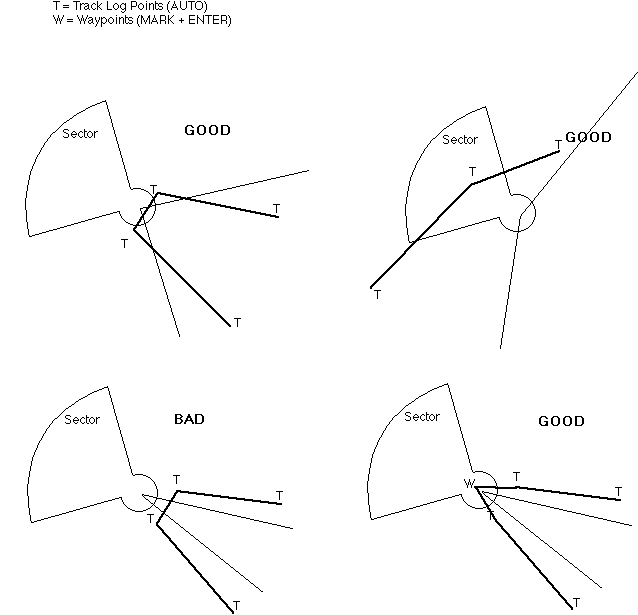14th April 2004 - cross platform version available here
Competition GPS Users Guide
D Tim Cummings
Download GPS Verification (beta) software
For best results run on PowerPC Mac with System 7.5.5 or higher, with Appearance Lib (standard in Mac OS 8 or higher) and Andale Mono font
VerifyGps v3.2b1.sit (Published 9 Dec 2000)
VerifyGps v3.0b4.sit (Published 21 Nov 2000)
VerifyGPS v2.0b1.sit
VerifyGPS v2.0b1.sit.hqx for slower but easier downloads
Download documentation VerifyGPS.pdf
Download useful but not necessary waypoint and track log software
MacGPSdmy.sit or
MacGPSdmy.sit.hqx
Download documentation MacGPSdmy.pdf
Download translator for Aircotec Top Navigator .tnc files (.sit for faster downloads)
ReadTNC.sit or (.hqx for easier downloads)
ReadTNC.sit.hqx
Software runs on Power Macintosh only. Requires Stuffit
Expander 5 to decompress.
This article can be read at
http://www.triptera.com.au/canungra/gps/index.html
Canungra Classic Trials GPS Verification
The 1998 Canungra Classic has been given approval from the HGFA Competitions
Committee to trial the use of GPS Track Logs for turnpoint and start gate
verification and timing. To aid pilots flying in this years Classic, I
have prepared this Competition GPS Users Guide. My experience is that GPS
Verification is much simpler for the pilot than Photo Verification and
I would recommend that all pilots obtain a GPS for this competition. If
you do not have a GPS you will not be disadvantaged as photo verification
will still be an option. As this is a trial, all pilots are recommended
to carry at least one camera as backup for the GPS. Our trials to date
have been with Garmin GPS. Users of other GPS makes will need to provide
their own software for downloading the track data.
1998 Canungra Classic will be trialling
GPS Turnpoint Verification
Entry fee only $100 ( + site fees $35).
|
GPS Initial Setup
All GPSs should be set with the following parameters
Time Zone: GMT +10:00
Datum: Australian Geodetic 1966
Track Log Interval: At most 30 seconds
Track Log Duration: At least 6 hours log.
Waypoint: Name = PILOT, Comment = Pilot's No + Name
On a Garmin GPS the following screens show where this data is set.
OPERATION SETUP NAVIGATION SETUP TRACK LOG SETUP
------------------ ------------------ ------------------
MODE: POSITION FORMAT: RECORD TRACK: Yes
Normal UTM/UPS ------------------
------------------ ------------------ CRITERIA:
DATE -- --- -- MAP DATUM: Time Interval:
TIME --:--:-- Astrln Geod '66 00:00:30
OFFSET: +10:00 ------------------ ------------------
------------------ CDI Scale: --.-- MEMORY USED ---%
CONTRAST ------------------ --- OF 768 POINTS
-------- UNITS: Metric ------------------
------------------ ------------------ CLEAR TRACK LOG?
BACKLIGHT TIME: HEADING:
-- seconds True
TONE:---
I/O SETUP WAYPOINT
------------ ------------------
GRMN/GRMN NAME:PILOT <-- important
HOST -- - -------
WAITING... UTM -------
65 TIM CUMMINGS <-- your number and name here
__ OF __ ------------------
PACKETS REF:______
BEARING DISTANCE
000° 0.00km
------------------
RENAME?
DELETE? DONE?
That is all there is to it. These settings can be set well before the start
of the competition. Why not set them now! There is no advantage
to the pilot to have different settings as the computer software will compensate.
However, data could be lost if they are not set.
GPS Operation
There is a requirement that the track log includes 10 minutes (or total
flying time if less) BEFORE and 10 minutes AFTER each turnpoint or start
gate. It is also a requirement that at least 30 minutes of track log per
flight is recorded. To verify a turn point or start gate at least part
of a track log segment must be inside that turn point or start gate sector.
( A track log segment is the straight line between two consecutive track
log points less than 60 seconds apart) As an added security to ensure the
GPS records an "in sector" segment, the pilot can mark a waypoint while
he is in sector. If the timestamp on this waypoint is consistent with the
automatic track log it will be considered as a track log point.
The simple steps to achieve these requirements with a Garmin GPS are:
-
BEFORE Launching - Turn GPS on
-
While In Start Gate Sector - Press MARK then ENTER
-
While In Turnpoint Sector - Press MARK then ENTER
-
AFTER Landing - Turn GPS off
Pressing MARK then ENTER records a waypoint which will be added to the
Track Log. This is optional but highly recommended where the course line
deviates significantly around the turnpoint, for example in an Out and
Return. To ensure an accurate timestamp make sure you press ENTER within
5 seconds of pressing MARK. You can add as many waypoints to the Track
Log as you like. If you were not sure your first one was in sector, then
when you are sure you are in sector, press MARK then ENTER again.
Pilots using GPS logging with more frequent data points, say every
5 seconds need not be concerned with manually setting waypoints. They can
just fly the course. Sounds perfect doesn't it!
You don't need to have the GPS on the whole flight but remember it
needs to be on for at least 10 minutes before and 10 minutes after each
turnpoint. Also, if a GPS doesn't have a fix it will not be recording track
log entries even if it is on. You don't want to be circling at a turnpoint
waiting for your GPS to get a fix. Of course, to leave your GPS on all
the time you need good batteries.
It is strongly recommended to use
1000mAh or better AA batteries
in Garmin GPSs.
|
FAI Sectors
Turnpoint
The FAI Sporting Code Section 7 (6.6.8) states that:
"The photo sector is a quadrant (90 degree sector) on the ground
with its apex at the turn point and orientated symmetrically to and remote
from the two legs of the course which meet at the turn point."
Furthermore the HGFA competitions manual 3rd ed (2.8.2.1) states that:
"The sector limit is one kilometre from the quadrant apex."
For the purposes of GPS Verification, the area of the sector has been increased
to allow for 100m random error (Selective Availability) of GPS devices.
"The area within 100 metres horizontally from the turnpoint is
considered part of the sector"
The Beer Can turn point sector as it is often called looks like the following
figure.

Start Gate
The Start Gate also includes the 100m radius around the Start Point, as
is shown in the following figure. Advantages in using GPS Track Log for
a Start Gate are that all GPS tell the same time and from the Track Log
the time that the glider crosses the start line can be interpolated to
the nearest second.

Goal
The HGFA comps committee has requested that traditional means be used for
determining goal crossing times. At the Canungra Classsic we will also
calculate the crossing time based on the GPS as a double check and also
to evaluate the feasibility of using it in future competitions.
Examples of Track Log Verification

Full List of Rules
Some special rules have been developed by the HGFA Competitions Committee
for use of GPS at Canungra. For a full list of rules see http://www2.eis.net.au/~tim/classic98/gpsrules.html.
Conclusion
The Canungra Classic this year promises to be an ideal competition for
pilots new to competition flying intimidated by the complications caused
by cameras. The entry fee has been reduced THIS YEAR ONLY to encourage
newcomers to enter and fly with Australia's best. See the Skysailor Competitions
Calendar for details or check out http://www2.eis.net.au/~tim/classic98/classic.html
and enter online!.
The use of GPS in hang gliding and paragliding is a welcome addition
that removes some of the major hurdles to successful and enjoyable competition
flying. The potential of this technology is only just starting to be realised
and I am sure there are many novel applications of the technology still
to be devised.
Last Update 28 June 1998



